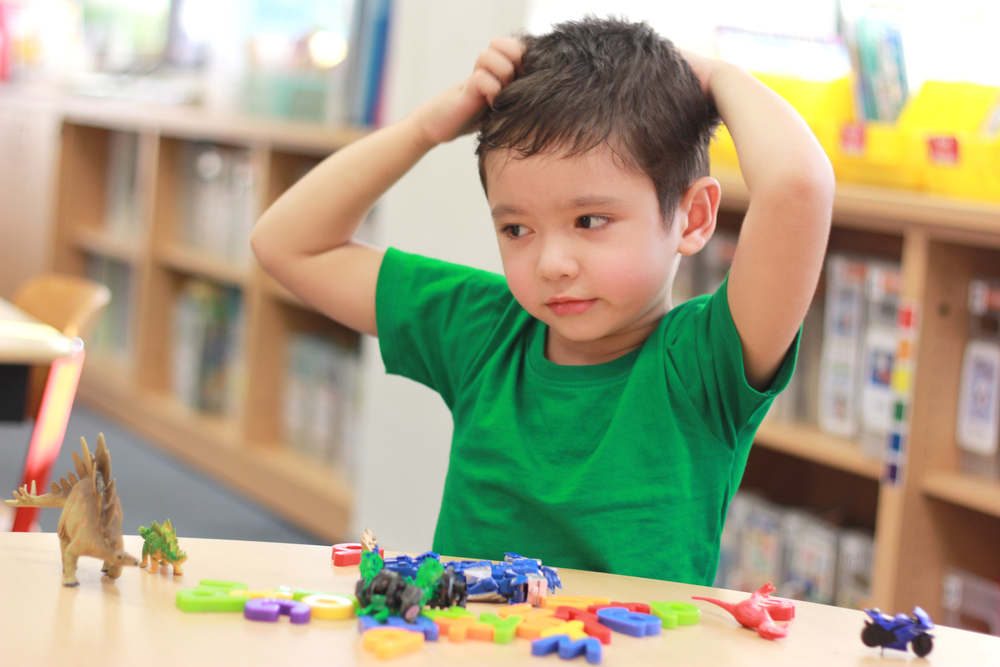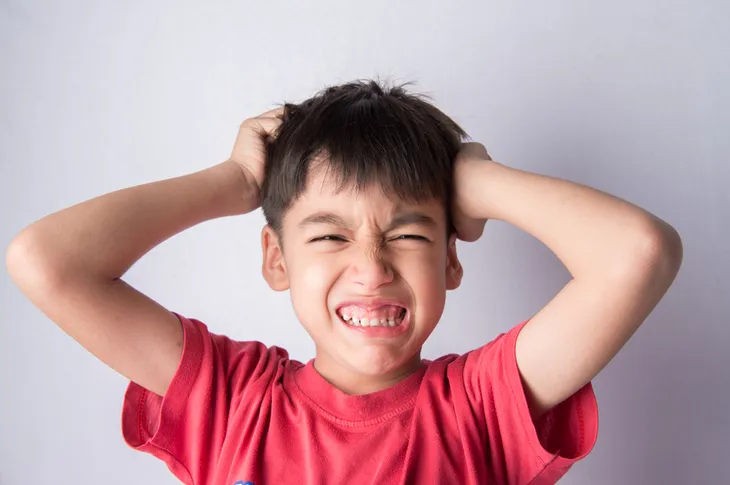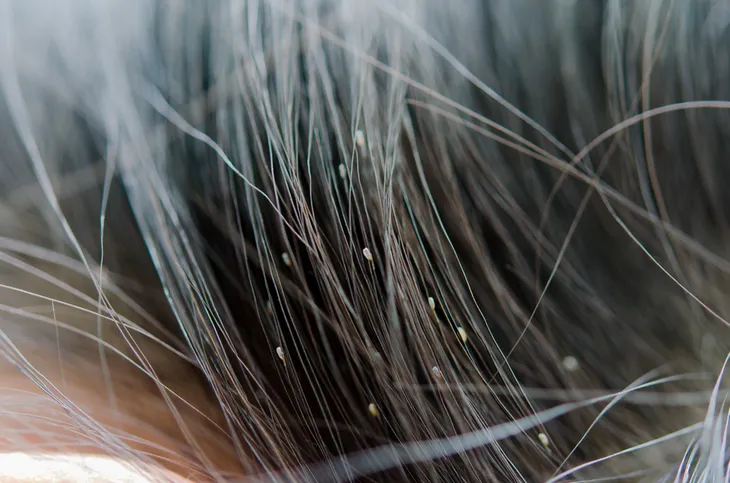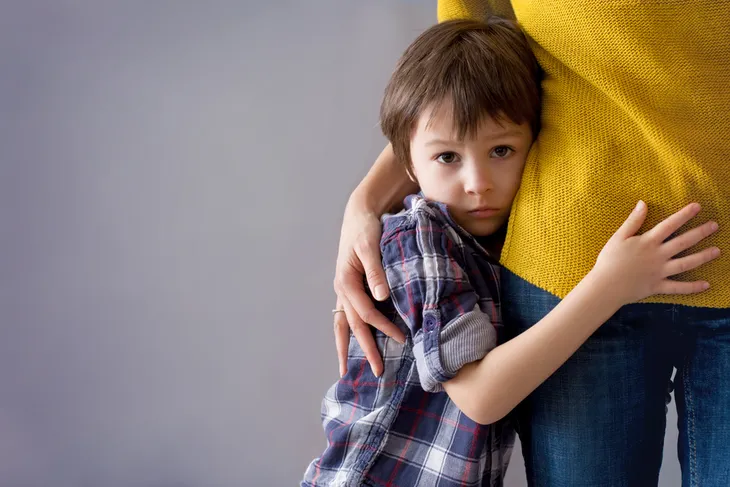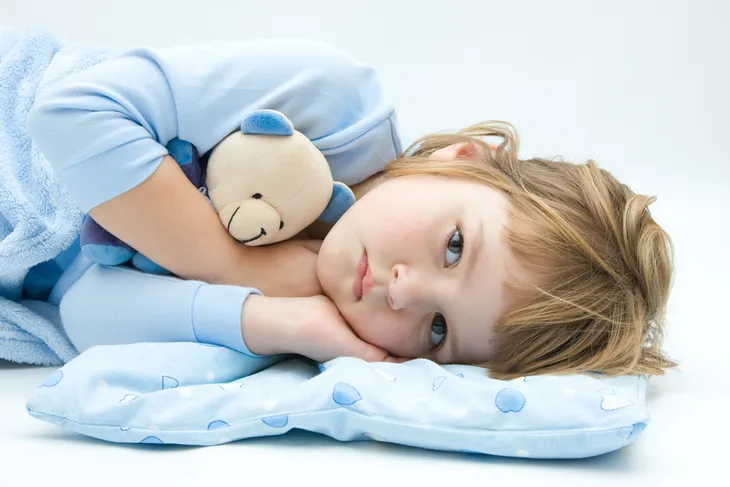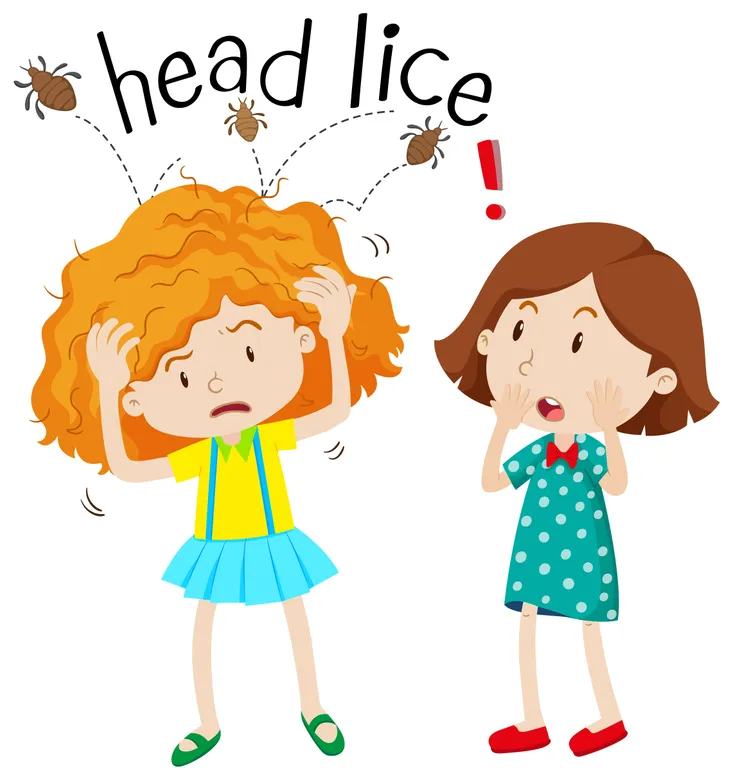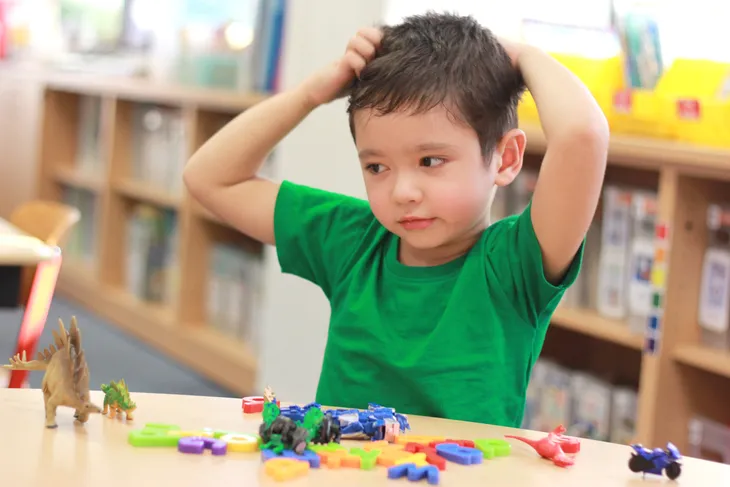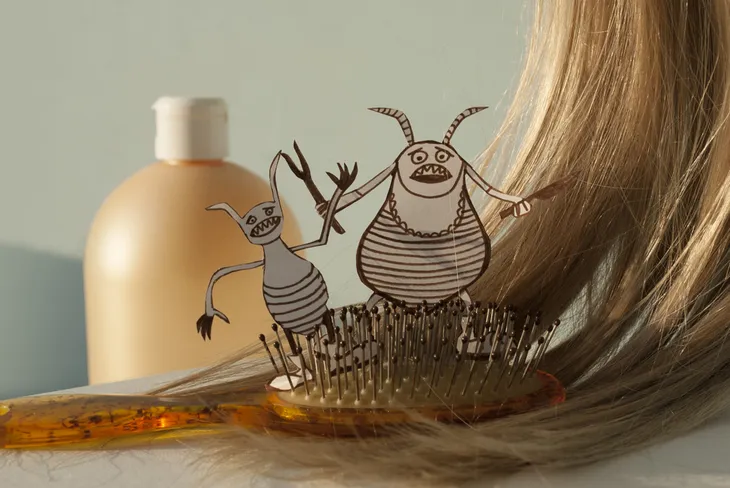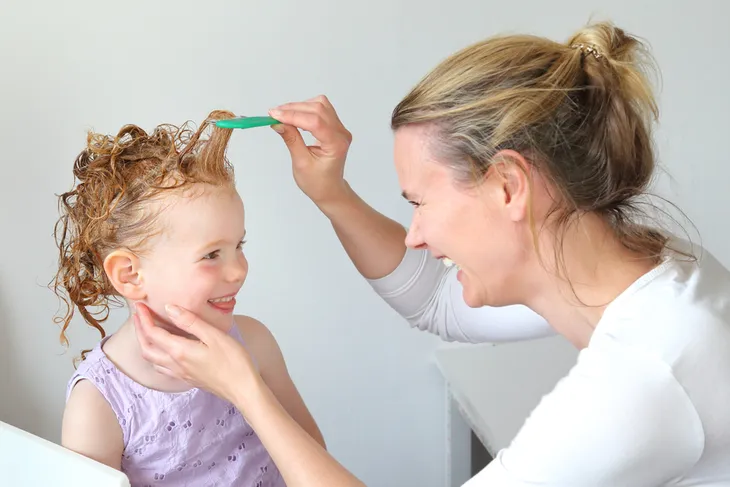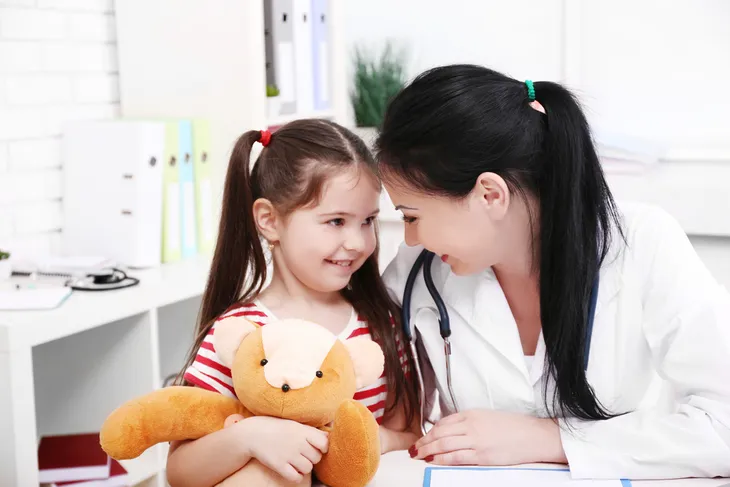Lice are the bane of many parents’ existence. Even just the word lice gives us the creepy crawlies! Any parent that has suffered through their child having lice (a tiny, wingless parasitic insect that loves human hair) knows they never want to go through it again! Although lice sound dangerous, they are quite harmless (if caught early) and a very common problem among kids between the ages of 3- and 12-years-old. Lice is easily spread in group settings where they can happily and hungrily spread from child to child.
The problem with ridding a household of lice is that they are extremely contagious and difficult to kill for good. Even though their bites don’t cause any diseases, they can cause painfully inflamed irritation and itchiness in a child’s scalp, and the persistent scratching can lead to a severe infection if left untreated.
Parents, be on the lookout for any of these 14 warning signs that a child (or even adult) has lice…
1. Itching
A child who is incessantly complaining of an itchy scalp is one of the most common signs of lice! An itchy scalp is an allergic reaction to the bites of lice, and it’s actually the saliva or feces of lice that cause an itchy sensation that just doesn’t seem to go away. The onset of itching depends on how sensitive your child’s skin is to the lice—oftentimes it can take up to 6-weeks for kids to start scratching after an infection.
2. Irritated Scalp
We’ve already established that the saliva and feces from lice is what causes the urge to scratch. The constant itching will eventually result in skin irritation and a painfully inflamed scalp. It could even lead to an infection if left untreated.
3. Lice Eggs (Or Nits)
Before the chicken came the egg and the same goes for lice. In this case, lice eggs (or nits) appear as tiny yellow, tan, or brown dots in the hair. Adult lice lay their eggs on hair shafts, close to the scalp, where the temperature is balmy for hatching within 1- to 2-weeks’ time. If you start to see little dots that look like dandruff in your child’s hair, try to brush them off. If they stick, your child likely has lice nits.
4. Sores and Infection
If the nits hatch, lice will start to crawl through the hair and bite your child’s scalp, which causes small red bumps or sores that start to crop up on the head. As they get more and more bites, they scratch more and these areas can become tender. If they become infected, they will ooze and crust over.
5. Irritability
Obviously, there’s nothing fun about having a case of head lice. Chances are if your child does have lice, the more they will itch and the more irritable their mood will become.
6. A Notice From School
Once it reaches the point where a school or daycare facility finds it necessary to send a note home with parents to alert them about a head lice breakout circulating amongst the kids, your child may already have an infestation. When you receive a notice from school, you should immediately check your child’s scalp for lice or nits to give you the best chances of preventing an infestation in your home.
While your instinct might be to freak out, Reader’s Digest reassures that lice are harmless and don’t carry disease or indicate poor housekeeping. “They’re simply a parasite transmitted via head-to-head contact,” writes the source. Also, they can’t hop, fly, or jump (although they can be projected through static electricity), so taking your kid out of school or changing their routine isn’t necessary. Instead, go over with them how they can prevent the lice from spreading, for example, not touching other kids heads and discouraging sharing hats and hair supplies.
7. Swollen Lymph Nodes
Severe cases of head lice may result in painfully swollen lymph nodes in the neck. “If broken skin from frequent scratching results in infection, you might notice the lymph nodes behind your child’s ears and on his or her neck become tender and swollen,” writes Reader’s Digest. This can occur when untreated bites cause a staph infection. If this happens, contact your doctor as your child could need a round of antibiotics.
8. Trouble Sleeping
Lice, like many parasitic creatures, are more active in the dark and at night. This is why people who have lice might also have trouble sleeping at night. Someone who has lice will experience a lot of itchiness at night, which stops them from falling asleep. “If you notice your child twisting and turning at night, or acting irritable from a lack of sleep, you might want to check his or her scalp,” writes Reader’s Digest.
9. Another Family Member or Friend has Lice
Once one family member brings lice into your home, the chances of one or more other family members being infected significantly increase. Check everyone in the household for lice immediately, and treat anyone that show signs of lice nits or adult lice infestation with lice shampoo.
10. Complaints of Creepy-Crawlies
There is this misconception that anyone with lice is dirty or has poor hygiene. That’s not the case! Lice can happen to just about anyone, no matter how many times you shower in a day! That being said, the idea of insects crawling around in someone’s hair is enough to make us queasy. However, it’s one of the common symptoms of lice. A child might complain about a “moving sensation” in their hair, which is just a result of the lice crawling around through their hair.
11. Is It Dandruff or Lice?
You might be wondering why we’re looking for dandruff (which is a whole other problem), but a good way to determine whether or not someone is suffering from lice is to compare it to dandruff. Lice eggs (or nits) can resemble dandruff, so looking for this is an effective way to spot them on the scalp. Be sure not to mistake one for the other. “Nits are oval in shape and about the size of a knot in thread; they’re usually yellow or white in color and latch onto hair shafts about a quarter-inch from the scalp,” explains Reader’s Digest. The best way to distinguish between the two is whether or not they move.
Dandruff will easily flake off and fall out of the hair, but lice won’t. “They can look just like a grain of sand, and they’re not easily removed from the hair,” says Paradi Mirmirani, MD, a board-certified dermatologist, to Parents. If you or your child is suffering from dandruff, check out this article on Effective Ways to Exile Winter Dandruff.
12. Small Red Bumps on Their Neck
We already talked a bit about how lice bites can cause sores and infections, but when looking for signs of lice, you can also look for any irritation around the neck, ears, shoulders, and of course, scalp. That’s right, you can look for signs of lice outside of the just the scalp. According to Reader’s Digest, red bumps on any of these areas can indicate a child has been scratching. Keep an eye on these bumps because as we already mentioned, they can lead to an infection.
13. Movement in the Hair
This one goes hand in hand with the creepy-crawly feeling, but when checking for lice, shine a light on their hair and pay attention to whether you see any movement. You likely won’t be able to see the lice because they are so tiny. According to Reader’s Digest, they’re only about the size of a sesame seed and their eggs are even smaller! The best way to look for them is to use a fine-toothed comb and drag it through the hair while it’s wet. “Slide the comb from scalp to end, checking its teeth after each swipe. A magnifying glass might be necessary,” writes the source.
Because these bugs are light-sensitive, they will try to scramble away as soon as they are exposed. “They crawl fast,” says Sally Kelly, RN to Parents. “They’re not like a tick that just sits there feeding. It’s easier to find the nits, so look for those first. Nits are more likely to be within 1-centimeter of the scalp; if they’re farther from the scalp than that, they’re almost always hatched or dead.”
14. When to See a Doctor
While lice can easily be treated at home, the Mayo Clinic still recommends consulting with a doctor before beginning treatment. There have been many cases where children are treated with over-the-counter medication or head lice treatments when they didn’t actually have head lice. The source goes on to list a number of things that can be mistaken for a nit like “dead or empty nits from a previous head lice infestation, dandruff, residue from hair products, bead of dead hair on a hair shaft, scab tissue, dirt or other debris,” as well as other small insects.
In order to be sure you or your child has head lice before applying any treatment, get a second opinion from a doctor.
